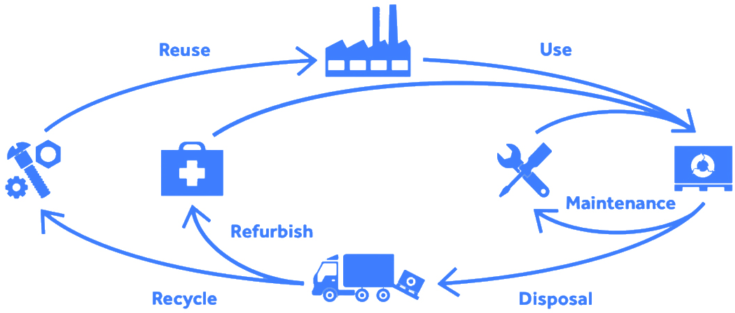The circular economy offers numerous opportunities for companies to reduce their exposure to linear risks, mitigate supply uncertainty and price volatility, reduce costs, and exploit new market and business opportunities. New technologies facilitate the development and introduction of new business models that generate new revenue streams based on reuse, remanufacturing, sharing or leasing.
Companies that cannot reuse or recycle their own goods, by-products or waste can offer these to organizations that can. This approach creates symbiotic circular relationships while allowing the companies to generate new revenue streams and avoid waste management costs.
Repair and refurbishment schemes enable new service-based business models and strengthen the customer relationship while increasing the effective useful life and revenues from a given asset. Product service systems (PSS), such as full-service leasing and metered services, provide the asset owners control over the products while incentivizing circular design, optimizing use, and making the repair and asset reuse easier.


Circular models can host cost-effective collection and return systems for goods, materials and other resources as well as asset-sharing schemes (e.g., car-sharing) and systems for product or component reuse (e.g., automotive parts). Communities facilitate the closing of circular loops through the refurbishing, remanufacture, recycle, or otherwise reuse of products within their neighborhoods and economic base.
The transition to a circular economy can be challenging, especially for those companies with structures, strategies, operations, and supply chains that are rooted in the traditional linear economy. The transition from a linear to a circular economy requires the transformation of production processes, investments and the modification of processes, feedstock, equipment and output as well as staff re-training and cooperation within the value chain.
Two of the main obstacles to transition are the lack of standardization in environmental, social and governance (ESG) criteria and economic incentives or economic disincentives. Both call for government action and policy instruments to encourage transformation to a circular economy.
